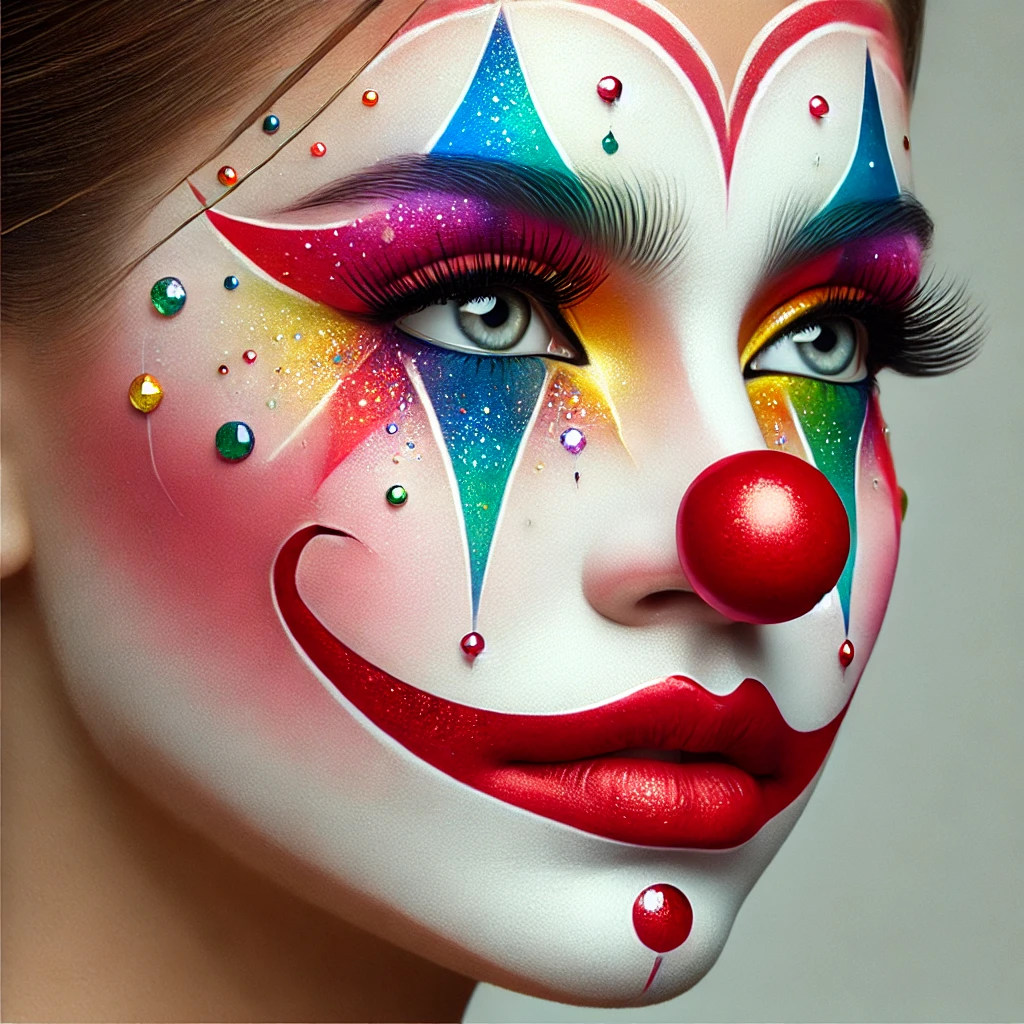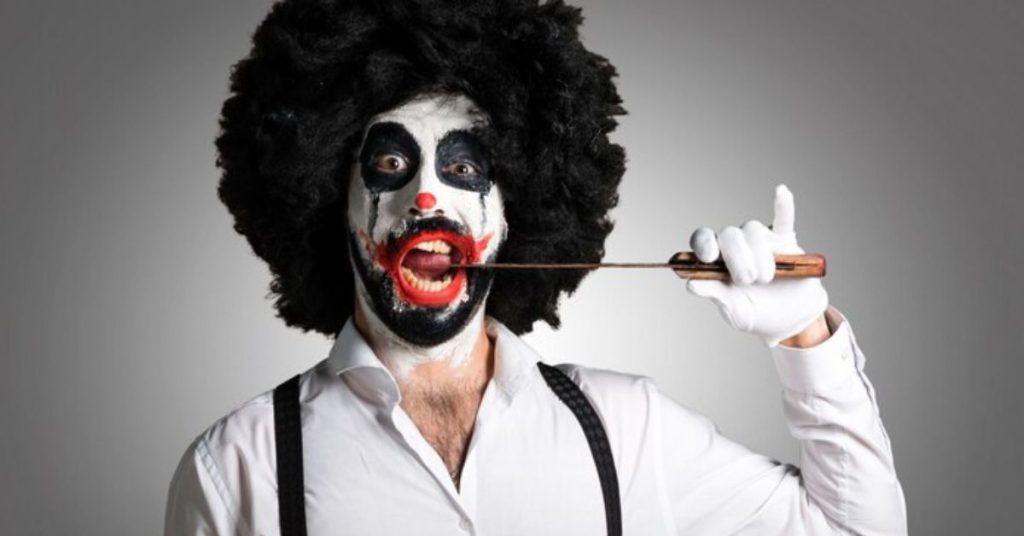
The Ultimate Guide to Clown Makeup: Tips, Tricks, and Must-Have Essentials
Clown makeup is more than just a fun way to dress up; it’s an art form that allows performers to express themselves, bring characters to life, and captivate audiences of all ages. Whether you’re preparing for a costume party, a theatrical performance, or simply exploring a new hobby, mastering the basics of clown makeup can be both exciting and challenging. However, for beginners, the process might feel overwhelming due to the variety of techniques, products, and styles to choose from. Fear not! This comprehensive guide will walk you through everything you need to know, from essential tools and makeup techniques to practical tips that will help you perfect your clown look. So, let’s dive in and unleash your inner performer

Understanding the Basics of Clown Makeup
Clown makeup isn’t just about slapping on face paint and calling it a day. It’s about creating a character that can evoke laughter, surprise, or even fear, depending on the style you choose. Here are the main elements that make up clown makeup:
- Base Makeup: This is the foundation of any clown look. It could be the classic white base or a skin-toned option depending on the clown style you’re aiming for.
- Bold Features: Clown makeup often involves exaggerated eyes, lips, and eyebrows to emphasize expressions.
- Characterization: Your makeup reflects your clown’s personality—happy, sad, goofy, or creepy. It’s a visual representation of who your clown character is.
Before we jump into specific techniques, let’s explore the different styles of clown makeup.
Types of Clown Makeup Styles Explained
There are several types of clowns, each with its unique makeup style. Understanding these styles can help you choose the one that best fits your character.
1. Whiteface Clown
This is the most traditional and recognizable form of clown makeup. The entire face is painted white, and the features (like eyes and lips) are accentuated with bold colors like red and blue. This style is often used for elegant or authority-like clowns.
2. Auguste Clown
The Auguste clown is the one you’ll often see in circus performances. Instead of a white face, it uses a flesh-toned or light pink base. The eyes and lips are drawn with vibrant colors, creating a chaotic and mischievous look.
3. Tramp or Hobo Clown
This style is characterized by a sad, worn-out appearance, often with smeared or uneven makeup. The colors are muted, emphasizing a tired or forlorn expression. This look is perfect for storytelling or theatrical performances.
4. Scary or Horror Clown
Popularized by characters like Pennywise, the scary clown style is designed to invoke fear. It uses dark, sharp lines, smudged makeup, and features like exaggerated teeth or blood to create a haunting effect.
Must-Have Products for Clown Makeup
To achieve a flawless clown look, you’ll need the right tools and products. Here’s a list of essentials:
- Clown White Face Paint: Brands like Mehron and Ben Nye are known for their high-quality, long-lasting white face paints.
- Grease Paints: These are essential for vibrant colors that won’t smudge or fade during performances.
- Setting Powder: Lock in your makeup with a translucent setting powder to prevent it from melting under hot lights.
- Face Crayons & Bold Eyeliners: These are great for adding sharp lines, detailing around the eyes, and creating defined shapes.
- Sponges and Brushes: Invest in good-quality applicators to help blend paints and achieve smooth edges.
- Special FX Supplies (Optional): If you’re venturing into horror clown territory, liquid latex and fake blood can add dramatic effects.
Step-by-Step Guide to Applying Clown Makeup
Creating a clown look may seem daunting, but with a little patience and practice, you can master it. Here’s a step-by-step guide to help you get started:
Step 1: Prep Your Skin
Start by cleansing and moisturizing your face. This will create a smooth canvas and help the makeup adhere better. If you have sensitive skin, consider applying a primer to protect it from heavy products.
Step 2: Apply the Base
For a classic clown, use a white face paint as your base. Using a damp makeup sponge, apply it evenly across your face, ensuring full coverage. For an Auguste or tramp clown, opt for a pink or flesh-toned base.
Step 3: Outline Your Design
Use an eyeliner pencil to sketch the features you want to exaggerate, such as your eyes, eyebrows, and mouth. This will act as a guide when you start adding color.
Step 4: Add Colors and Details
Use grease paints or face crayons to fill in your design. Focus on bold, exaggerated colors for the eyes and lips. For more intricate designs, like stars or teardrops, use a fine-tipped brush.
Step 5: Set the Makeup
Dust a generous amount of translucent setting powder to lock in your makeup. This step is crucial if you’re performing for an extended period, especially under bright lights.
Step 6: Finishing Touches
Add extras like glitter, fake eyelashes, or prosthetics to complete your look. If you’re going for a scary clown vibe, consider adding fake blood or dark eye shadows to enhance the effect.
Tips for Perfecting Your Clown Makeup
Here are some quick tips to help you perfect your clown makeup:
- Practice, Practice, Practice: The first few times might not look perfect, but with practice, you’ll improve. Experiment with different looks and techniques.
- Use Quality Products: Investing in professional-grade makeup ensures better coverage and longer-lasting results.
- Don’t Forget to Set: Setting your makeup with powder or a setting spray is crucial for long-lasting wear.
- Stay Hygienic: Always clean your brushes and sponges after each use to avoid skin irritation.
- Experiment with Colors: Don’t be afraid to play around with different color schemes and designs. Clown makeup is all about creativity.
How to Safely Remove Clown Makeup
Removing heavy clown makeup can be tricky. Here’s how to do it effectively:
- Step 1: Use an oil-based makeup remover to break down grease paints and heavy layers.
- Step 2: Gently wipe away the makeup using soft cleansing wipes or cotton pads.
- Step 3: Wash your face with a mild cleanser to remove any residue.
- Step 4: Moisturize your skin afterward to keep it hydrated and healthy.
Frequently Asked Questions (FAQs)
Q1: Can I use regular makeup for clown designs?
Yes, but professional face paints and grease paints are better for achieving vibrant, long-lasting colors.
Q2: How do I prevent my clown makeup from smudging?
Always use a setting powder or setting spray after applying your makeup. This will help lock it in place.
Q3: What if I have sensitive skin?
Opt for hypoallergenic, skin-safe products. Do a patch test on your arm before applying makeup to your face.
Q4: How long does clown makeup take to apply?
Depending on the complexity, it can take anywhere from 30 minutes to an hour. More intricate designs may take longer.
Q5: Can I use water-based paints instead of grease paints?
Yes, water-based paints are easier to remove but may not last as long, especially if you’re sweating or performing under hot lights.
Conclusion
Mastering clown makeup can be a fun and rewarding experience, whether you’re dressing up for a special event, a party, or even exploring a new creative hobby. With the right products, techniques, and a bit of practice, you can bring any clown character to life, from a whimsical entertainer to a spooky Halloween creature. Remember, it’s not just about the makeup itself, but the character you create with it. So, grab your brushes, face paints, and let your creativity shine through!
